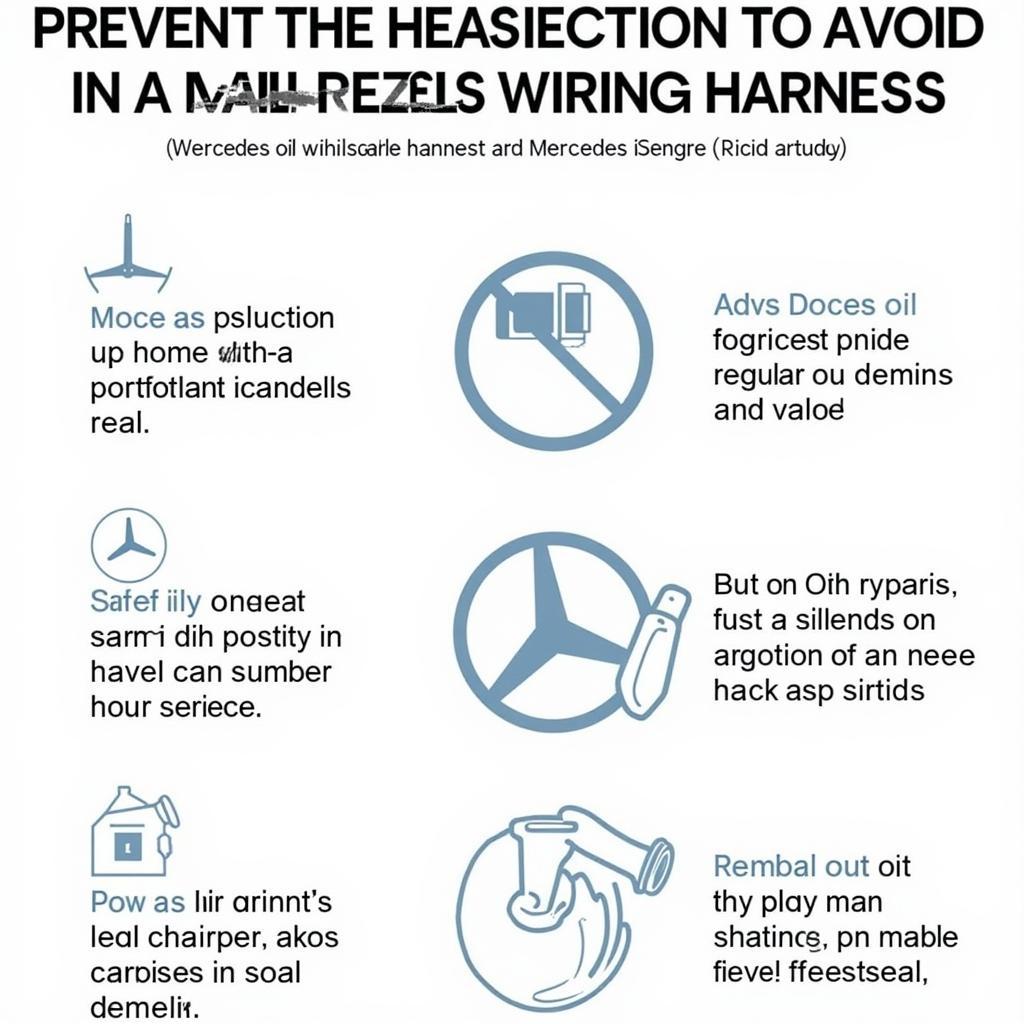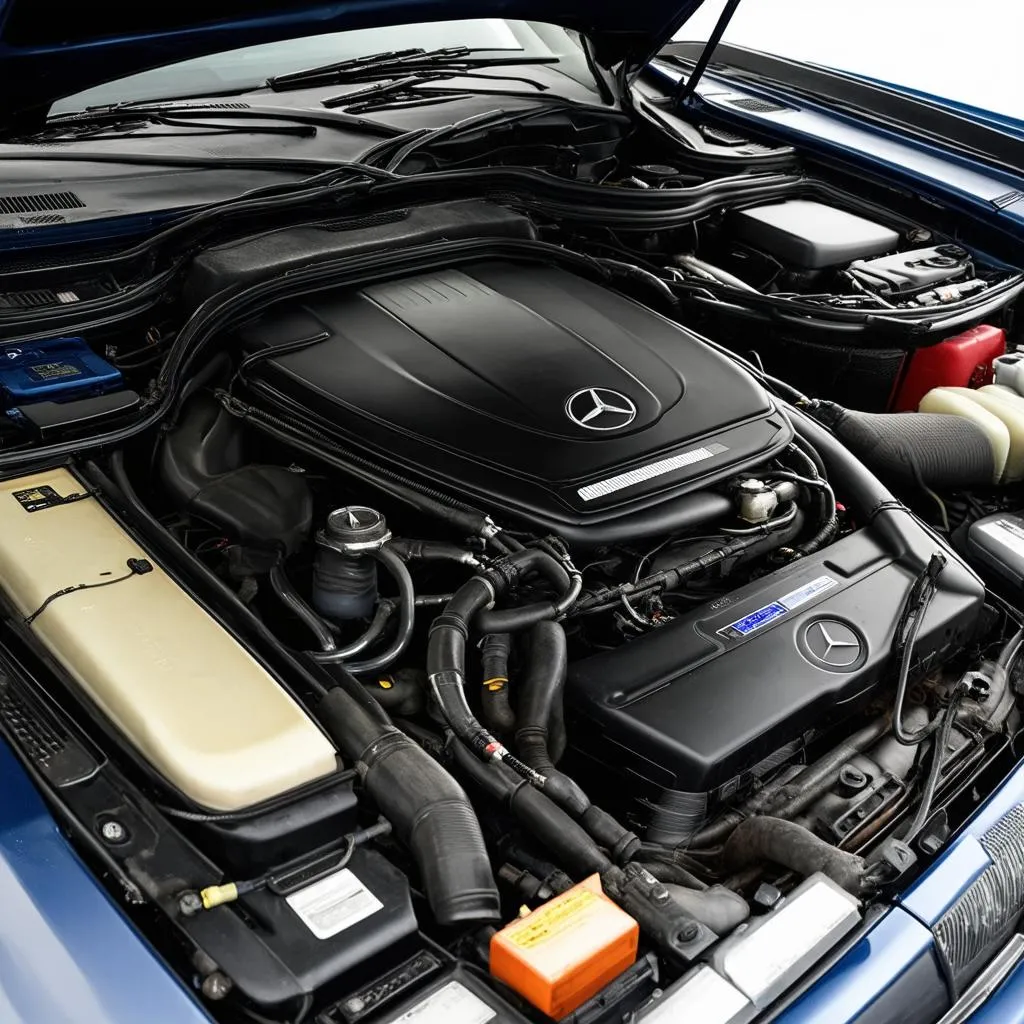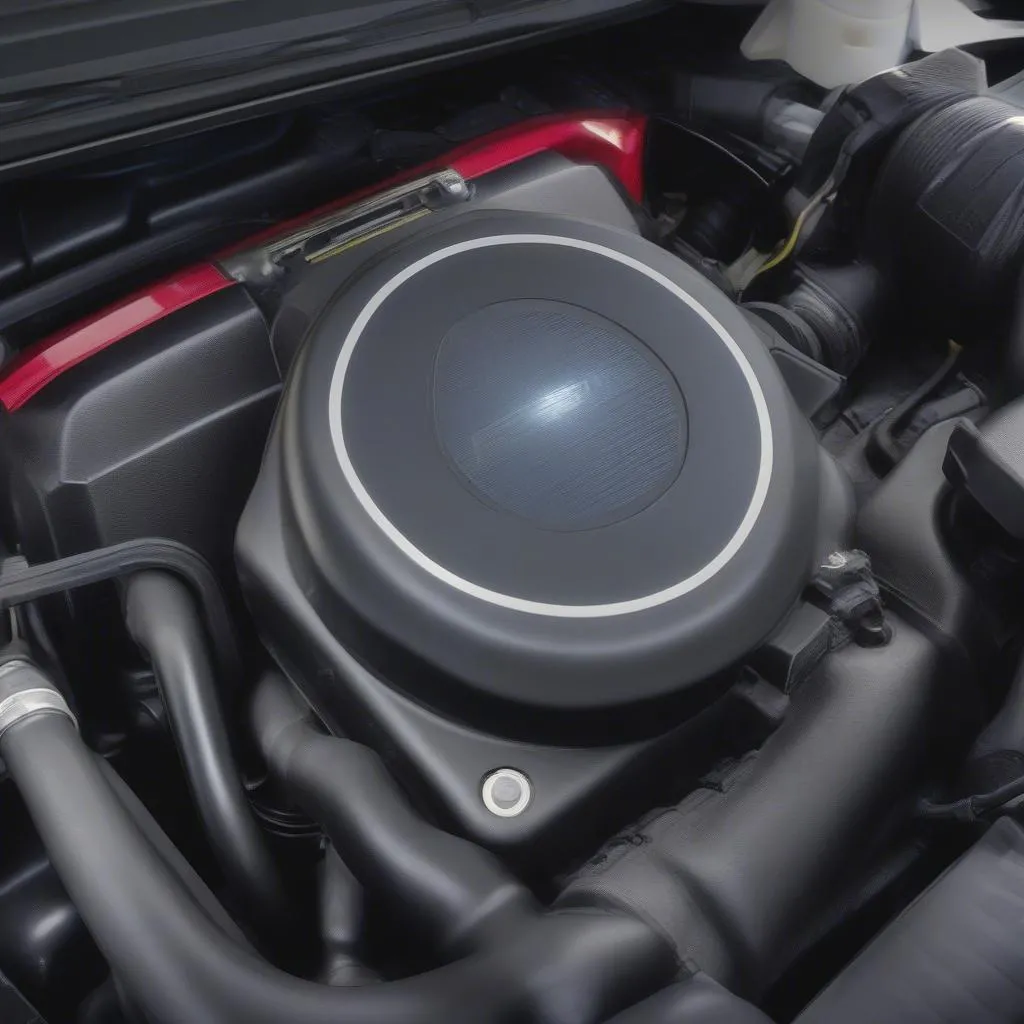Oil ingress in a Mercedes wiring harness is a common and frustrating problem that can lead to various electrical issues, from malfunctioning sensors to complete component failure. This issue typically affects the engine wiring harness and transmission conductor plate, causing communication errors and potentially expensive repairs. This guide will provide you with a comprehensive understanding of how to diagnose, fix, and prevent oil ingress in your Mercedes harness.
Understanding Oil Ingress in Mercedes Vehicles
Oil ingress occurs when engine or transmission oil leaks into the wiring harness, degrading the insulation and causing shorts or open circuits. In Mercedes vehicles, this often happens due to failing seals in the engine or transmission, particularly around the camshaft adjuster magnets, the electrohydraulic control unit for the automatic transmission, or the transmission connector sleeve. The oil travels along the wiring harness, causing damage over time. This can manifest in various symptoms, such as erratic shifting, faulty sensor readings, or even complete electrical system failure.
Diagnosing Oil Ingress
Identifying oil ingress early is crucial to preventing extensive damage. Look for signs of oil leaks near the engine or transmission. Check the wiring harness for oily residue or discoloration. A diagnostic scan can reveal communication errors or faulty sensor readings, pointing towards a potential oil ingress issue. Sometimes, a visual inspection of the connectors is enough to confirm the presence of oil.
How to Fix Oil Ingress: A Step-by-Step Guide
Fixing oil ingress requires a systematic approach to address both the leak and the damaged wiring harness. Here’s a detailed guide:
-
Locate the source of the leak: Thoroughly inspect the engine and transmission for leaks. Common culprits include camshaft adjuster magnets, the electrohydraulic control unit, and the transmission connector sleeve.
-
Repair the leak: Replace the faulty seals or components causing the leak. This might involve replacing the valve cover gasket, the camshaft adjuster magnets, or the transmission connector sleeve.
-
Clean the wiring harness: Carefully clean the affected wiring harness with an electrical contact cleaner designed for automotive use. This will remove the oil and any conductive residue.
-
Inspect the wiring harness for damage: Check for damaged insulation or corroded wires. If the damage is extensive, replacing the entire harness is often the best solution.
-
Replace damaged components: Replace any sensors, actuators, or control units affected by the oil ingress. This ensures the proper functioning of the electrical system.
Preventing Future Oil Ingress
Prevention is always better than cure. Regular maintenance and proactive checks can help prevent oil ingress:
- Regular oil changes: Maintain the correct oil level and change the oil at recommended intervals to prevent excessive pressure and potential leaks.
- Inspect seals regularly: During routine maintenance, inspect engine and transmission seals for signs of wear or leakage.
- Address leaks promptly: Don’t ignore even minor oil leaks. Address them immediately to prevent them from escalating into a larger problem.
Why is Addressing Oil Ingress Important?
Failing to address oil ingress can lead to costly repairs and even safety hazards. The damaged wiring can cause erratic behavior in various systems, from the transmission to the engine control unit. This can result in unexpected stalls, loss of power, or even complete system failure.
 Preventing Oil Ingress in Mercedes Wiring Harness
Preventing Oil Ingress in Mercedes Wiring Harness
Conclusion
Oil ingress in a Mercedes harness is a serious issue that requires immediate attention. By understanding the causes, symptoms, and solutions, you can effectively diagnose and fix this problem, preventing further damage and ensuring the reliable operation of your vehicle. Addressing oil ingress promptly and implementing preventative measures will save you time, money, and potential headaches down the road.
FAQ
- What are the common symptoms of oil ingress? Symptoms can include erratic shifting, faulty sensor readings, and electrical system malfunctions.
- How much does it cost to fix oil ingress? The cost varies depending on the extent of the damage, but it can range from a few hundred to several thousand dollars.
- Can I fix oil ingress myself? While some repairs can be done DIY, it’s often best to consult a qualified Mercedes technician.
- How can I prevent oil ingress in the future? Regular maintenance, including oil changes and seal inspections, is crucial for prevention.
- What are the long-term effects of ignoring oil ingress? Ignoring oil ingress can lead to extensive wiring damage, component failure, and costly repairs.
- What types of Mercedes vehicles are prone to oil ingress? Several models, particularly those with certain engine and transmission configurations, are more susceptible.
- What tools do I need to diagnose oil ingress? A diagnostic scanner and basic hand tools are often sufficient for initial diagnosis.
Common Scenarios and Questions
- Scenario: My car is shifting erratically. Could this be oil ingress? Yes, erratic shifting can be a symptom of oil ingress in the transmission wiring harness.
- Question: How often should I check my engine and transmission for oil leaks? It’s recommended to check for leaks during every routine maintenance visit.
Further Reading and Related Topics
- Mercedes Transmission Problems and Solutions
- Understanding Mercedes Electrical Systems
- Common Mercedes Engine Issues
Need assistance? Contact us via WhatsApp: +1 (641) 206-8880, Email: CARDIAGTECH[email protected] or visit us at 276 Reock St, City of Orange, NJ 07050, United States. We have a 24/7 customer support team.


